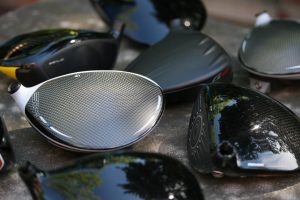Equipment
Golf club history: woods and irons
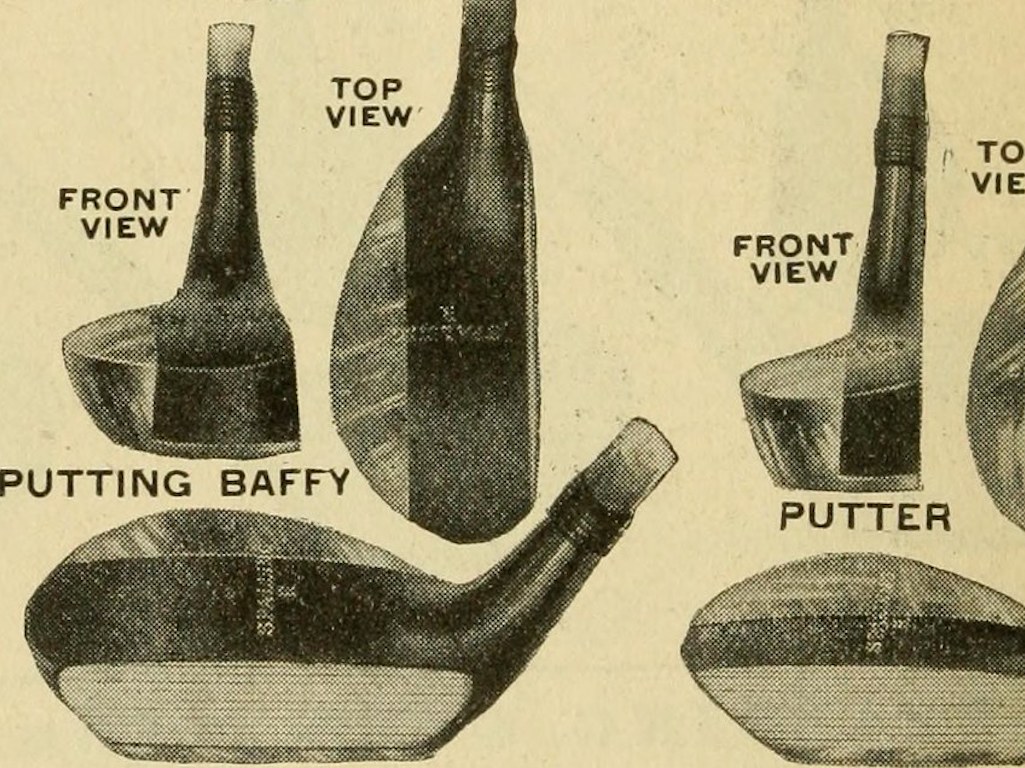
If you’re going to play golf, you’re going to need some clubs. The game dates back to the 1400s in Scotland, so naturally, golf club history does too. We’ve come a long way from wooden clubs and feather-filled balls. For the sake of this piece were going to stick with the modern evolution of the game’s equipment starting off with the invention of the steel shaft in the early 1900s.
Some of the first steel shafts came from a fishing rod producer in Britain by the name of Apollo and we’re developed in the early 1920s. The shafts were much more consistent than the wooden shafts they were attempting to replace but they were still considered inconsistent by many players. Steel shaft also didn’t catch on until a number of years after their conception because until 1924 the USGA considered them nonconforming equipment. It took 5 more years for the R&A to make them legal in 1929.
It was that same year in 1929 when True Temper advanced the steel shaft and developed the process to taper shafts down or create “steps”—something we are all familiar with now. These steps could be moved around the shaft and change the flex which created more options for golfers to find the right equipment and be fit.
Since that time, the biggest steps (no pun intended) we have seen taken in steel shafts have come from stronger, lighter materials to create more flex and bend profile options for golfers.
If you are curious about graphite shafts, check out my piece “The real firsts of the golf industry” for the history behind their development as well as some other technological firsts.
Here’s a broad survey of recent golf club history.
Golf club history: woods
Now to the “big stick.” The term “driver” comes from the idea that the longest club was meant to be driven as far as possible from the teeing area and hence the name stuck. The club heads were made of persimmon, because of the strong dense nature of the wood. To get these wooden heads to where they needed to be for weight, they would be fitted internally with lead weights.
The video below profiles one of the last persimmon wood manufacturers in the world.
With persimmon becoming more expensive and golf growing in popularity, many manufactures shifted from using solid persimmon to laminate—that change also made the clubs more durable, and also a change in golf club history. Those companies included Wilson, Spalding, MacGregor, even Ping with the introduction of the Karsten driver and woods.

As technology continued to move forward, other companies used various materials like graphite composites to make woods, and as much as they worked well for increasing durability they never quite caught on.

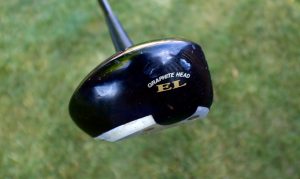
The next jump came in 1979 when Gary Adams had an idea to make wood a thing of the past. He took out a $24,000 loan against his house to found TaylorMade Golf. The first product to market was a 12-degree metal driver; the very first of it’s kind in golf club history.

Since then, metal wood technology has continued to move forward leaps and bounds; shifting from steel to titanium, and titanium to multi-material heads featuring aerodynamic designs built for speed. The rules of golf have limited size and spring-like effect of drivers but manufacturers continue to innovate and make drivers faster and more forgiving.
golf club history: Irons

Until Karsten Solheim and Ping arrived on the scene (see Greatest Ping irons of all time), iron design remained mostly the same—thin, forged blades that weren’t very forgiving. It’s not to say that everything was exactly the same, quite the contrary, but from an evolution standpoint, these were just baby steps.
To see the blade evolution here are a couple of great reads:
Then, just like with putters, Karsten Solheim designed an iron that would help reduce the severity of shots hit away from the sweet spot and the modern cavity back was born: the Ping 69. It was then only a few years later in 1982 that the most popular iron of all time, the Ping Eye 2, was set free into the world and this is where iron technology went from baby steps to full-blown Olympic sprinting.
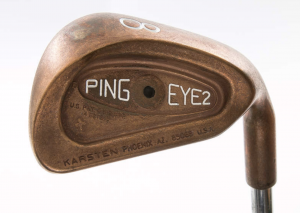
Cavity back irons make the game more enjoyable and easier because their design reduces the severity of mishit shots and get the ball in the air easier, something that benefits all level of golfers, even professionals. Just like drivers, over the last decade, we have seen the introduction of faster, longer more forgiving multi-material designs enter the market. As CAD design and manufacturing techniques go well beyond was would have been imaginable only a decade ago.
Golf club history: beyond cavity backs
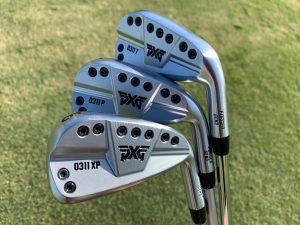
New 2020 PXG Gen 3 Irons
The next leap forward was thin-faced irons so fast they needed to be reinforced with polymer materials to prevent them from caving in. The idea wasn’t new, with the introduction of clubs like the PXG 0311 or Taylormade P790, but they perfected the ability to build ultra-thin faced irons that not only performed but felt good too. The title of the first thin or slot-soled irons belongs to Wilson golf and their Reflex irons.
Conclusion
Technology will continue to push the boundaries of design, and golfers will benefit from these breakthroughs. The question of “how much further can we really go?” is up to engineers and advancements in materials and manufacturing, but however far it is, we should be excited about what they will think of next!
- LIKE71
- LEGIT13
- WOW1
- LOL4
- IDHT2
- FLOP5
- OB2
- SHANK11
Product Reviews
Three Swing Challenge: Testing the Titleist Vokey WedgeWorks A+ grind

The first wedge has made its way to the Three Swing Challenge! This week we have the WedgeWorks A+ grind that was recently released by Vokey. BK is looking for a new 60-degree wedge, and this could be a contender.
Why three swings?
Many years ago, the legendary Barney Adams, founder of Adams Golf told us this:
“My formula as a fitter was three shots only. I discounted No. 1 just because it was the first one, counted 100 percent of No. 2 and discounted No. 3 because the player was starting to adjust.”
- LIKE3
- LEGIT1
- WOW1
- LOL0
- IDHT0
- FLOP0
- OB0
- SHANK1
Whats in the Bag
Daniel Brown WITB 2024 (July)

- Daniel Brown WITB accurate as of The Open Championship.
Driver: Ping G430 LST (9 degrees)
Shaft: Fujikura Ventus Blue 6 X
3-wood: Ping G430 Max (15 degrees)
Shaft: Fujikura Ventus Blue 7 X

(Image courtesy of SMS on Tour)
Irons: Ping i230 (3), Ping Blueprint S (4-9)
Wedges: Ping s159 (50-12S, 54-12S, 58-06T)
Putter: Ping PLD
Grips: Golf Pride MCC
Ball: Titleist Pro V1
Info an images via SMS on Tour.
- LIKE13
- LEGIT4
- WOW2
- LOL0
- IDHT1
- FLOP0
- OB0
- SHANK0
Equipment
Collin Morikawa’s pre-Open equipment adjustments

Editor’s note: This is an excerpt from a piece our Andrew Tursky originally wrote for PGATour.com’s Equipment Report. Head over there for the full article.
Three years later, Morikawa has once again changed his irons to deal with the unique Scottish turf.
Morikawa has been using TaylorMade P730 blade short irons (7-PW), P7MC mid irons (5-6) and a TaylorMade “Proto” 4-iron with a cavity-back construction this year.
However, he switched into a new set of TaylorMade P7CB irons (5-PW) before finishing T4 at last week’s Genesis Scottish Open, to go along with his familiar “Proto” 4-iron. TaylorMade’s P7CB irons are the finalized versions of the “Proto” 4-iron that Morikawa has been using, except they remain unreleased to retail.

According to TaylorMade, Morikawa switched into a full set of the new P7CB irons to aid with turf interaction, just like he did prior to his 2021 Open victory.
Morikawa is honing in on his winning formula overseas.

Morikawa also has switched from his usual TaylorMade Qi10 5-wood to a lower-launching TaylorMade P790 3-iron equipped with a Project X HZRDUS 105 Hybrid shaft. The loft of the club has been bent down to 19 degrees.
TaylorMade says that Morikawa switched into the new driving iron In order to “have an option to hit something lower that will roll out in the fairways.”

Head over to PGATour.com for the full article.
- LIKE23
- LEGIT2
- WOW1
- LOL2
- IDHT0
- FLOP0
- OB0
- SHANK1
-

 Product Reviews1 week ago
Product Reviews1 week agoThree Swing Challenge: Testing the Edel Array F-2 putter
-

 Equipment1 week ago
Equipment1 week agoWhat clubs do equipment free agents choose to use on tour? We found out
-

 19th Hole3 weeks ago
19th Hole3 weeks ago‘You’re right, we’re always wrong!’ – Sergio Garcia receives warning during Open qualifier
-

 News2 weeks ago
News2 weeks agoHighlights from the Wilson Golf Product Testing and Fitting Experience at Pinehurst
-

 News2 weeks ago
News2 weeks agoDavis Thompson’s winning WITB: 2024 John Deere Classic
-

 Equipment3 weeks ago
Equipment3 weeks agoQ&A: The truth behind Bryson DeChambeau’s new Avoda irons from company founder Thomas Bailey
-

 19th Hole2 weeks ago
19th Hole2 weeks agoMajor champ ‘disappointed’ not to be chosen as U.S. Ryder Cup captain
-

 Whats in the Bag3 weeks ago
Whats in the Bag3 weeks agoCam Davis’ winning WITB: 2024 Rocket Mortgage Classic

